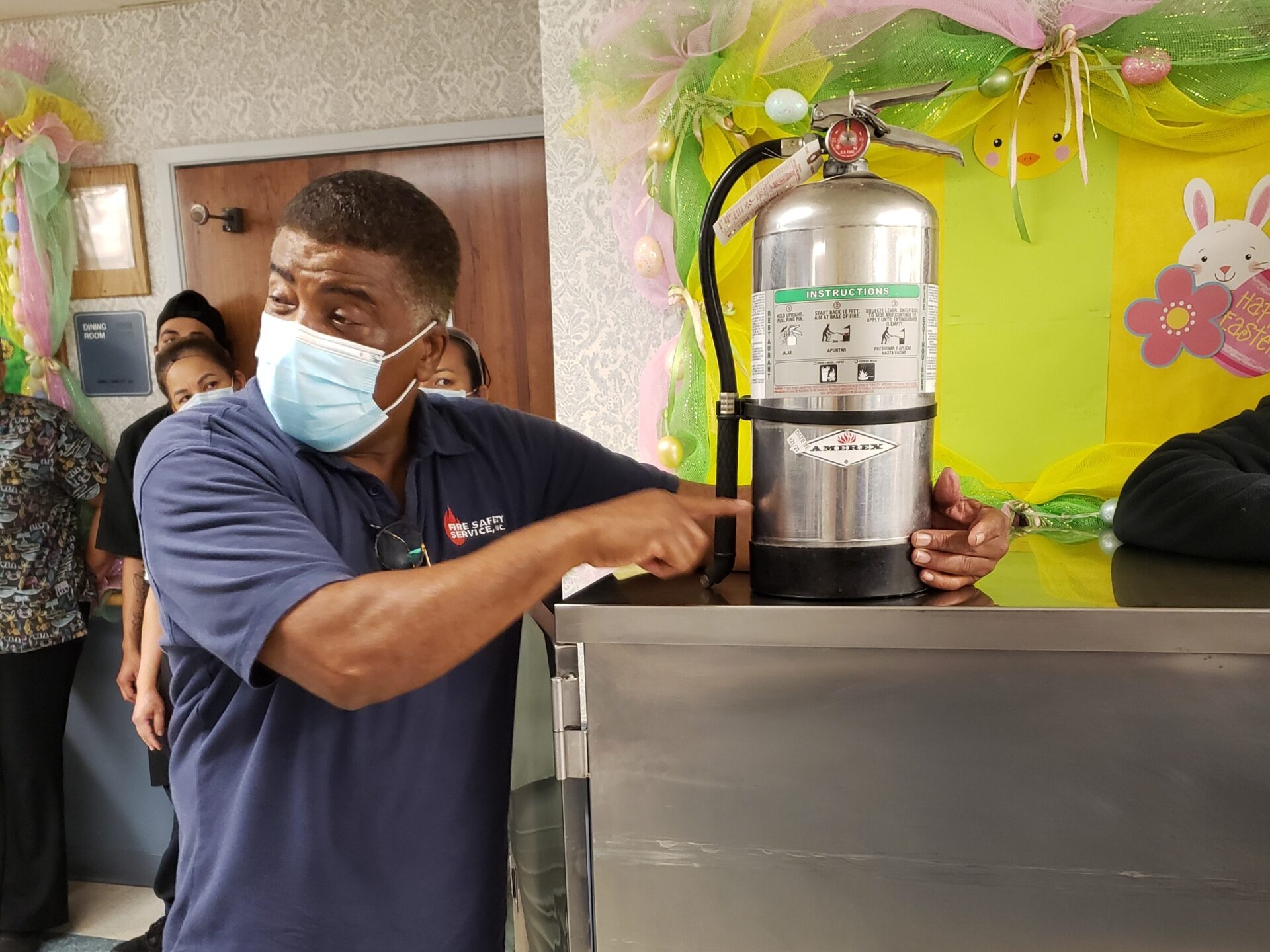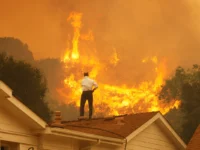Contents
- 1 The Importance of Fire and Safety Services
- 2 Understanding Fire Prevention Strategies
- 3 The Role of Fire Suppression Systems
- 4 Emergency Response: Preparedness and Timely Action
- 5 Fire Safety Assessments for Residential Properties
- 6 Fire Safety in Commercial and Industrial Settings
- 7 The Role of Fire Safety Inspections
- 8 Fire Safety Education: Empowering Communities
- 9 Innovations in Fire Safety Technology
- 9.1 Smart Fire Detection Systems
- 9.2 Automatic Extinguishing Technologies
- 9.3 Real-Time Monitoring and Alert Systems
- 9.4 Enhanced Fire-Resistant Materials
- 9.5 Intelligent Evacuation Systems
- 9.6 Fire Safety Apps and Mobile Solutions
- 9.7 Improved Firefighter Safety Equipment
- 9.8 Remote Monitoring and Control Systems
- 10 Collaborating with Fire and Safety Professionals
Where we delve into the world of fire and safety services. In this article, we will explore the crucial role these services play in safeguarding lives and property, ensuring optimal safety for all. Whether it’s fire prevention, suppression, or emergency response, it’s essential to understand the comprehensive solutions available to protect ourselves and our communities. Join us as we uncover the vital aspects of fire and safety services and shed light on the latest advancements in this critical field.
The Importance of Fire and Safety Services
Fire and safety services play a critical role in protecting lives and property from the devastating impact of fire incidents. Whether it’s residential, commercial, or industrial settings, ensuring optimal safety against fire hazards is paramount. These services encompass a range of preventive measures, emergency response protocols, and specialized equipment to minimize risks and mitigate potential damages.
Protecting Lives
The primary objective of fire and safety services is to safeguard human lives. By implementing preventive strategies, such as fire safety education, risk assessments, and training programs, individuals are equipped with the knowledge and skills to respond effectively in case of a fire emergency. Additionally, these services encompass emergency response protocols, evacuation plans, and timely action to ensure the safe evacuation of occupants from affected areas.
Preserving Property
Fire incidents can result in significant property damage, leading to financial losses and emotional distress. Fire and safety services aim to minimize property damage by implementing fire suppression systems, such as sprinklers and fire extinguishers, which can quickly control and extinguish fires before they spread. Additionally, fire safety inspections help identify potential hazards, allowing for timely interventions and the implementation of fire-resistant materials in construction.
Ensuring Business Continuity
In commercial and industrial settings, fire incidents can disrupt operations and lead to substantial financial setbacks. Fire and safety services provide comprehensive solutions to ensure business continuity. This includes the installation of advanced fire detection systems, emergency planning, and employee training to facilitate swift evacuation and minimize downtime in case of a fire emergency.
Compliance with Regulations
Fire and safety services ensure compliance with local, regional, and national regulations governing fire safety. By conducting regular inspections, fire safety professionals help identify any non-compliance issues and provide recommendations for rectification. Adhering to safety codes and regulations not only protects lives and property but also helps avoid legal liabilities and penalties.
Peace of Mind
Knowing that comprehensive fire and safety measures are in place brings peace of mind to individuals, families, and business owners alike. It reassures us that appropriate precautions have been taken to prevent fire incidents and that, in the unfortunate event of a fire, professionals equipped with the necessary expertise and resources are ready to respond.
In conclusion, fire and safety services are indispensable in ensuring the safety and well-being of individuals and protecting property from fire hazards. By focusing on prevention, emergency response, compliance, and educating communities, these services play a vital role in minimizing risks and creating a safer environment for all.
Understanding Fire Prevention Strategies
Prevention is the key to minimizing fire risks and ensuring the safety of individuals and property. Effective fire prevention strategies encompass a range of measures that target the identification, assessment, and mitigation of potential fire hazards.
Risk Assessment
Fire risk assessment is a fundamental step in fire prevention. It involves identifying potential fire hazards, evaluating their likelihood of occurrence, and assessing the potential impact of a fire incident. By conducting a thorough risk assessment, organizations and individuals can develop tailored fire prevention plans to address identified risks.
Safety Training and Education
Providing fire safety training and education to individuals is crucial in promoting responsible behavior and equipping them with the knowledge to prevent fire incidents. Training programs cover various aspects, such as proper use of fire extinguishers, evacuation procedures, and awareness of fire hazards specific to different environments, like homes, offices, or industrial settings.
Fire-Resistant Construction Materials
Incorporating fire-resistant materials in construction is an effective preventive measure. These materials are designed to withstand high temperatures and slow down the spread of fire. They include fire-resistant doors, walls, ceilings, and insulation, providing valuable time for evacuation and reducing the potential for extensive damage.
Electrical Safety Measures
Electrical malfunctions are a common cause of fire incidents. Implementing electrical safety measures, such as regular inspection of wiring systems, proper installation of electrical appliances, and adherence to electrical codes and standards, significantly reduces the risk of fires originating from electrical faults.
Proper Storage and Handling of Flammable Substances
Flammable substances, if not stored and handled correctly, can pose a significant fire risk. Implementing proper storage measures, such as labeling containers, using appropriate storage cabinets, and ensuring good ventilation, minimizes the possibility of accidental ignition and subsequent fires.
Fire Detection and Alarm Systems
Early detection of fire is crucial for effective prevention. Installing fire detection and alarm systems, including smoke detectors, heat sensors, and fire alarms, provides timely alerts, enabling swift response and evacuation. Regular maintenance and testing of these systems are essential to ensure their reliability.
In summary, fire prevention strategies encompass risk assessment, safety training, use of fire-resistant materials, electrical safety measures, proper storage and handling of flammable substances, and the installation of fire detection and alarm systems. By implementing these strategies, individuals and organizations can significantly reduce the likelihood of fire incidents and protect lives and property from the devastating consequences of fires.
The Role of Fire Suppression Systems
When a fire breaks out, quick and efficient suppression is crucial to minimize damage and protect lives. Fire suppression systems are designed to control and extinguish fires promptly, preventing them from spreading and causing further harm.
Sprinkler Systems
Sprinkler systems are one of the most common and effective fire suppression systems. They consist of a network of pipes with sprinkler heads strategically placed throughout a building. When a fire is detected, the sprinkler heads in the affected area release water, suppressing the flames and reducing heat levels.
Fire Extinguishers
Fire extinguishers are portable devices that provide a direct means of fighting small fires. They contain extinguishing agents, such as water, foam, dry chemical powder, or carbon dioxide, that can be discharged onto the fire to extinguish it. It is important to choose the right type of extinguisher for the specific fire hazards present.
Specialized Suppression Agents
In certain situations, specialized suppression agents may be required. For example, in areas containing sensitive equipment or where water damage needs to be minimized, clean agent suppression systems can be used. These systems utilize gas-based agents, such as halon or carbon dioxide, to suppress fires without leaving residue or causing additional damage.
Kitchen Suppression Systems
Kitchens, especially in commercial settings, pose unique fire risks due to the presence of cooking equipment and flammable materials. Kitchen suppression systems are designed specifically for these environments and are equipped with automatic fire detection and suppression features. They quickly respond to kitchen fires, preventing them from spreading and causing extensive damage.
Vehicle Fire Suppression Systems
Fire suppression systems are not limited to buildings but are also crucial for vehicles, such as buses, trucks, and heavy machinery. These systems are designed to detect and suppress fires in the engine compartment or other vulnerable areas, preventing the loss of valuable assets and reducing the risk of injuries.
Integration with Fire Alarm Systems
Fire suppression systems often work in conjunction with fire alarm systems. When a fire is detected by the alarm system, it triggers the activation of the suppression system, ensuring a rapid response. This integration ensures that both detection and suppression occur seamlessly, maximizing the effectiveness of fire safety measures.
In conclusion, fire suppression systems, including sprinklers, fire extinguishers, specialized suppression agents, kitchen suppression systems, vehicle fire suppression systems, and their integration with fire alarm systems, play a crucial role in controlling and extinguishing fires. By investing in these systems, individuals and organizations can significantly enhance their ability to respond to fire emergencies and protect lives and property.
Emergency Response: Preparedness and Timely Action
During a fire emergency, preparedness and swift action are crucial to ensuring the safety of individuals and minimizing damage. Effective emergency response protocols enable people to respond promptly and efficiently, potentially saving lives and preventing further escalation of the situation.
Emergency Planning
Developing comprehensive emergency plans is a critical aspect of preparedness. These plans outline specific procedures for different scenarios, including fire incidents. They include protocols for evacuations, designated assembly areas, communication channels, and responsibilities assigned to individuals or teams during an emergency.
Evacuation Routes and Signage
Clear and well-marked evacuation routes are essential for guiding individuals to safety during a fire emergency. Establishing multiple evacuation routes ensures that people have alternative options if one route is blocked. Visible and informative signage helps individuals navigate the evacuation process, even under stressful conditions.
Emergency Alarms and Communication Systems
Effective emergency communication systems, including fire alarms, public address systems, and intercoms, play a crucial role in alerting individuals about a fire emergency. These systems provide clear and distinct signals to prompt immediate action and relay important instructions or updates throughout the facility.
Training and Drills
Regular training sessions and drills are essential to familiarize individuals with emergency response procedures and ensure they can execute them effectively. These exercises simulate real-life scenarios, allowing individuals to practice evacuation routes, use fire extinguishers, and reinforce the importance of remaining calm and following instructions during emergencies.
Emergency Response Teams
Designating and training emergency response teams within organizations can significantly enhance emergency preparedness. These teams consist of individuals who are trained in fire safety, first aid, and evacuation procedures. They play a crucial role in coordinating and assisting with emergency response efforts, ensuring a swift and organized evacuation process.
Collaboration with Emergency Services
Collaborating with local emergency services, such as fire departments, is essential to ensure a coordinated response during fire emergencies. Organizations should establish communication channels with these services, share emergency plans, and conduct joint exercises to familiarize emergency responders with the facility’s layout and specific emergency protocols.
Post-Emergency Assessments and Improvement
After a fire emergency, conducting post-emergency assessments is crucial to identify areas for improvement in emergency response plans and procedures. This includes evaluating evacuation times, identifying bottlenecks or obstacles, and making necessary adjustments to enhance future emergency preparedness.
In conclusion, emergency response preparedness involves emergency planning, clear evacuation routes and signage, effective communication systems, training and drills, designation of emergency response teams, collaboration with emergency services, and continuous improvement through post-emergency assessments. By prioritizing these aspects, individuals and organizations can be better equipped to respond to fire emergencies and ensure the safety of everyone involved.
Fire Safety Assessments for Residential Properties
Residential properties require careful consideration of fire safety measures to protect the lives of occupants and minimize property damage. Conducting fire safety assessments is crucial to identify potential hazards, implement preventive measures, and ensure the overall safety of residential spaces.
Identifying Fire Hazards
A thorough fire safety assessment begins with identifying potential fire hazards within residential properties. This includes evaluating electrical systems, heating sources, cooking equipment, flammable materials, and potential ignition sources. By identifying these hazards, appropriate preventive measures can be implemented.
Smoke Alarms and Early Warning Systems
Smoke alarms are essential components of residential fire safety. These devices detect smoke particles and emit a loud alarm to alert occupants of a potential fire. Installing smoke alarms in all bedrooms, hallways, and living areas is crucial for early detection and providing ample time for evacuation.
Escape Routes and Emergency Exits
Residential properties should have clearly marked and unobstructed escape routes and emergency exits. This includes ensuring that windows are easily accessible, doors open outward, and stairways are well-lit and free from clutter. Having multiple escape routes allows occupants to quickly exit the building in case of a fire emergency.
Fire-Resistant Construction Materials
Incorporating fire-resistant construction materials within residential properties can significantly enhance fire safety. This includes using fire-rated doors, walls, and ceilings that can withstand high temperatures and slow down the spread of fire. Fire-resistant materials provide valuable time for evacuation and reduce the potential for extensive damage.
Kitchen Fire Safety
Kitchens are common areas for fire incidents in residential properties. Implementing preventive measures, such as installing fire-resistant kitchen hoods, using fire extinguishers rated for cooking fires, and practicing safe cooking habits, can greatly reduce the risk of kitchen fires and ensure the safety of occupants.
Education and Fire Safety Training
Education plays a crucial role in residential fire safety. Conducting fire safety training sessions for occupants, especially children, helps raise awareness about fire hazards and teaches them how to respond in case of an emergency. Training should cover topics such as fire prevention, evacuation procedures, and the proper use of fire safety equipment.
Regular Maintenance and Inspections
Regular maintenance and inspections are necessary to ensure that fire safety measures within residential properties remain effective. This includes testing smoke alarms, checking fire extinguishers, and scheduling professional inspections of electrical systems, heating equipment, and chimneys to identify potential fire hazards.
In summary, fire safety assessments for residential properties involve identifying fire hazards, installing smoke alarms and early warning systems, ensuring clear escape routes and emergency exits, using fire-resistant construction materials, implementing kitchen fire safety measures, providing education and training, and conducting regular maintenance and inspections. By prioritizing these aspects, residential properties can significantly enhance fire safety and protect the lives and property of occupants.
Fire Safety in Commercial and Industrial Settings
Commercial and industrial settings present unique fire risks due to the presence of machinery, flammable substances, and complex infrastructures. Implementing comprehensive fire safety measures is crucial to protect lives, prevent property damage, and maintain business continuity.
Fire Risk Assessment
Conducting fire risk assessments is a crucial first step in commercial and industrial fire safety. These assessments identify potential fire hazards, evaluate their likelihood of occurrence, and assess their potential impact. By understanding the risks, appropriate preventive measures can be implemented.
Fire Prevention Systems and Equipment
Commercial and industrial settings require robust fire prevention systems and equipment. This includes installing fire alarm systems, automatic fire sprinklers, fire extinguishers, and specialized fire suppression systems tailored to the specific needs of the facility. These systems provide early detection and rapid response to minimize fire damage.
Emergency Response Plans
Developing comprehensive emergency response plans is crucial for commercial and industrial settings. These plans outline evacuation procedures, designated assembly areas, communication protocols, and the roles and responsibilities of employees during a fire emergency. Regular training and drills ensure that employees are prepared to respond effectively.
Employee Fire Safety Training
Providing fire safety training to employees is essential in commercial and industrial settings. Employees should be trained in fire prevention, proper use of fire extinguishers, evacuation procedures, and awareness of specific fire hazards related to their work environment. This empowers employees to take appropriate action during a fire emergency.
Flammable Material Storage and Handling
Proper storage and handling of flammable substances is critical in commercial and industrial settings. This includes implementing safety measures such as using approved storage containers, segregating flammable materials, and ensuring proper ventilation. Regular inspections and adherence to safety protocols minimize the risk of fire incidents.
Fire Safety Signage and Emergency Lighting
Ensuring clear and visible fire safety signage is crucial in commercial and industrial settings. This includes prominently displaying emergency exit signs, indicating the location of fire extinguishers and emergency equipment, and providing proper emergency lighting to guide occupants during evacuations.
Maintenance and Inspection of Fire Safety Systems
Regular maintenance and inspections of fire safety systems are vital to ensure their proper functioning. This includes testing fire alarms, inspecting sprinkler systems, checking fire extinguishers, and scheduling professional inspections of electrical systems and equipment to identify potential fire hazards.
In conclusion, fire safety in commercial and industrial settings requires fire risk assessments, the implementation of fire prevention systems and equipment, the development of emergency response plans, employee fire safety training, proper storage and handling of flammable materials, clear signage and emergency lighting, and regular maintenance and inspections. By prioritizing these measures, businesses can protect their assets, safeguard employees, and maintain operations in the face of fire emergencies.
The Role of Fire Safety Inspections
Regular fire safety inspections are essential to ensure compliance with safety regulations and maintain a safe environment. These inspections involve thorough assessments of properties, identifying potential fire hazards, and implementing necessary measures to enhance fire safety.
Identifying Fire Hazards
Fire safety inspections aim to identify potential fire hazards within a property. This includes evaluating electrical systems, heating sources, storage areas, flammable materials, emergency exits, and other factors that could contribute to fire incidents. By identifying these hazards, appropriate preventive measures can be taken.
Assessing Compliance with Regulations
Fire safety inspections ensure compliance with local, regional, and national fire safety regulations. Inspectors assess whether a property meets the required standards for fire prevention, suppression systems, emergency exits, signage, and other safety measures. Non-compliance issues are identified for rectification.
Fire Safety Equipment and Systems Inspection
Inspectors thoroughly examine fire safety equipment and systems during inspections. This includes evaluating the functionality of fire alarms, sprinkler systems, fire extinguishers, emergency lighting, and exit signs. Inspections ensure that these critical components are properly maintained and in working order.
Reviewing Emergency Plans and Procedures
Emergency plans and procedures are reviewed during fire safety inspections to ensure their effectiveness. Inspectors evaluate evacuation routes, emergency exit signage, and the clarity of emergency instructions. They also verify that employees or occupants are familiar with emergency protocols.
Identifying Maintenance and Repairs
Fire safety inspections identify maintenance and repair needs related to fire safety infrastructure. This includes addressing issues such as faulty wiring, damaged fire alarms, blocked emergency exits, or other deficiencies that could compromise fire safety. Prompt rectification of these issues is crucial.
Providing Recommendations for Improvement
Following fire safety inspections, inspectors provide recommendations for improvement. These recommendations may include installing additional fire safety equipment, updating emergency plans, conducting employee training, or implementing specific measures to mitigate identified fire hazards.
Promoting Fire Safety Awareness
Fire safety inspections also play a role in promoting fire safety awareness. By highlighting potential fire hazards and providing recommendations for improvement, inspections raise awareness among property owners, managers, and occupants about the importance of fire safety and the measures necessary to maintain a safe environment.
In conclusion, fire safety inspections are critical for identifying fire hazards, ensuring compliance with regulations, inspecting fire safety equipment and systems, reviewing emergency plans, identifying maintenance and repair needs, providing recommendations for improvement, and promoting fire safety awareness. By conducting regular inspections, property owners can create a safer environment and reduce the risk of fire incidents.
Fire Safety Education: Empowering Communities
Fire safety education is essential in empowering individuals and communities with the knowledge and skills necessary to prevent fire incidents and respond effectively in case of emergencies. By raising awareness and promoting responsible behavior, fire safety education plays a vital role in creating a safer environment for all.
Incorporating Fire Safety in School Curricula
Integrating fire safety education into school curricula is an effective way to reach young individuals. By teaching students about fire hazards, prevention strategies, evacuation procedures, and the proper use of fire safety equipment, we equip them with life-saving knowledge from an early age.
Community Fire Safety Programs
Organizing community fire safety programs helps disseminate fire safety information to a broader audience. These programs can include interactive workshops, demonstrations, and educational campaigns that focus on specific fire safety topics, such as home fire prevention, kitchen safety, or electrical safety.
Public Awareness Campaigns
Public awareness campaigns utilize various media channels to raise awareness about fire safety. These campaigns feature advertisements, public service announcements, and social media campaigns that highlight fire hazards, prevention measures, and the importance of preparedness in fire emergencies.
Fire Safety Training for High-Risk Occupations
Providing specialized fire safety training for high-risk occupations, such as firefighters, industrial workers, or healthcare professionals, ensures that individuals in these fields have the necessary skills and knowledge to respond to fire incidents safely and effectively.
Home Fire Safety Tips
Sharing home fire safety tips with the community is crucial in preventing residential fires. These tips may include installing smoke alarms, creating and practicing escape plans, keeping flammable materials away from heat sources, and regularly maintaining fire safety equipment.
Fire Safety Education for Older Adults
Tailoring fire safety education for older adults is important considering their unique needs and vulnerabilities. Educating older adults about fire risks, home safety modifications, and the importance of assistance during evacuations can significantly enhance their safety and well-being.
Collaboration with Fire and Safety Professionals
Collaborating with fire and safety professionals strengthens fire safety education efforts. Firefighters and safety experts can deliver educational presentations, participate in community events, and provide valuable insights and expertise to ensure accurate and up-to-date information is shared.
In conclusion, fire safety education plays a vital role in empowering communities. By incorporating fire safety in school curricula, organizing community programs, conducting public awareness campaigns, providing specialized training, sharing home fire safety tips, tailoring education for older adults, and collaborating with professionals, we can create a culture of fire safety and ensure the well-being of individuals and communities.
Innovations in Fire Safety Technology
The field of fire safety has witnessed significant advancements in technology, revolutionizing the way we prevent, detect, and respond to fire incidents. These innovative solutions enhance fire safety measures, improve response times, and minimize the impact of fires on lives and property.
Smart Fire Detection Systems
Smart fire detection systems utilize advanced sensors, artificial intelligence, and data analysis to detect fires quickly and accurately. These systems can differentiate between real fires and false alarms, minimizing unnecessary disruptions while ensuring prompt response in case of a fire emergency.
Automatic Extinguishing Technologies
Automatic extinguishing technologies, such as fire suppression systems that use water mist or specialized gases, provide rapid and effective fire suppression without human intervention. These systems can suppress fires in their early stages, preventing them from spreading and minimizing water damage.
Real-Time Monitoring and Alert Systems
Real-time monitoring and alert systems enable continuous monitoring of fire safety parameters, such as temperature, smoke levels, or gas concentrations. These systems immediately alert designated individuals or emergency responders when abnormal conditions are detected, enabling swift action before a fire escalates.
Enhanced Fire-Resistant Materials
Advancements in fire-resistant materials have led to the development of innovative solutions that can withstand high temperatures and resist the spread of fire. These materials are increasingly used in construction, including fire-resistant doors, walls, floors, and insulation, enhancing overall fire safety in buildings.
Intelligent Evacuation Systems
Intelligent evacuation systems utilize advanced sensors and algorithms to optimize evacuation routes and provide real-time guidance to occupants during fire emergencies. These systems can adapt to changing conditions, identify congested areas, and direct individuals to safe exits, ensuring efficient evacuations.
Fire Safety Apps and Mobile Solutions
Fire safety apps and mobile solutions provide valuable resources and tools for individuals and emergency responders. These apps may include fire safety checklists, emergency contact information, real-time fire incident alerts, and interactive training modules, increasing accessibility and awareness of fire safety measures.
Improved Firefighter Safety Equipment
Advancements in firefighter safety equipment have led to the development of more protective gear, enhanced breathing apparatus, and improved communication systems. These innovations help ensure the safety and effectiveness of firefighters during fire suppression and rescue operations.
Remote Monitoring and Control Systems
Remote monitoring and control systems enable the centralized management and monitoring of fire safety systems across multiple locations. This allows for real-time data analysis, remote troubleshooting, and efficient coordination of emergency response efforts.
In conclusion, innovations in fire safety technology have transformed the way we approach fire prevention, detection, and response. Smart fire detection systems, automatic extinguishing technologies, real-time monitoring and alert systems, enhanced fire-resistant materials, intelligent evacuation systems, fire safety apps, improved firefighter safety equipment, and remote monitoring and control systems are just a few examples of these advancements. By embracing these technologies, we can enhance fire safety measures and create safer environments for individuals and communities.
Collaborating with Fire and Safety Professionals
Working alongside fire and safety professionals is essential for comprehensive fire protection. These experts possess the knowledge, experience, and specialized skills necessary to assess fire risks, develop effective safety plans, and ensure compliance with safety codes and regulations.
Expertise in Risk Assessment
Fire and safety professionals are well-versed in conducting thorough risk assessments. They can identify potential fire hazards, evaluate their likelihood of occurrence, and assess the potential impact of fire incidents. This expertise enables them to develop targeted fire prevention and mitigation strategies.
Development of Safety Plans
Collaborating with professionals allows for the development of customized and effective safety plans. These plans outline specific procedures for fire prevention, emergency response, and evacuation. Professionals can tailor these plans to match the unique needs and circumstances of different environments, such as residential, commercial, or industrial settings.
Emergency Response Coordination
During fire emergencies, effective coordination is crucial. Fire and safety professionals work closely with emergency responders, such as firefighters and paramedics, to ensure a synchronized response. They provide valuable guidance and support, facilitating a swift and organized evacuation process.
Compliance with Safety Codes and Regulations
Staying up to date with safety codes and regulations is a challenging task for individuals and organizations. Fire and safety professionals possess in-depth knowledge of these requirements and help ensure compliance. They conduct regular inspections, identify non-compliance issues, and provide recommendations for rectification.
Training and Education Programs
Fire and safety professionals play a vital role in delivering training and education programs. They provide instruction on fire safety protocols, proper use of fire extinguishers, evacuation procedures, and other essential aspects. These programs empower individuals with the knowledge and skills necessary to respond effectively during fire emergencies.
Consultation and Advice
Collaborating with fire and safety professionals allows for ongoing consultation and advice. They can provide expert guidance on fire safety equipment selection, the implementation of preventive measures, and best practices for maintaining a safe environment. Their insights contribute to continuous improvement in fire safety measures.
Continuous Improvement and Updates
Fire and safety professionals keep abreast of the latest advancements and updates in the field. They continuously assess emerging technologies, regulations, and best practices. By collaborating with these professionals, individuals and organizations can stay informed and implement the most effective fire safety measures.
In conclusion, collaborating with fire and safety professionals brings invaluable expertise, guidance, and support to fire protection efforts. Their expertise in risk assessment, development of safety plans, emergency response coordination, compliance with safety codes, training and education programs, consultation, and continuous improvement contributes to creating safer environments for all.
In conclusion, fire and safety services are crucial for ensuring optimal safety in various settings. From fire prevention strategies to emergency response protocols, these services play a vital role in protecting lives and property from fire hazards. Through comprehensive fire safety assessments, the implementation of preventive measures, and collaboration with fire and safety professionals, individuals and organizations can create a safer environment and minimize the devastating impact of fire incidents.
By understanding the importance of fire safety technology, such as smart detection systems and automatic extinguishing technologies, and promoting fire safety education within communities, we can empower individuals with the knowledge and skills necessary to prevent fires and respond effectively in emergency situations.
Remember, fire safety is a collective responsibility. By prioritizing fire prevention, implementing robust safety measures, and staying informed about the latest advancements in fire safety, we can protect lives, preserve property, and create a culture of safety. Stay vigilant, stay prepared, and together, let’s ensure a fire-safe environment for everyone.

Passionate about preserving lives and protecting properties, John Sarver is a dedicated advocate for fire safety. With an unwavering commitment to educating and empowering communities, he has become a prominent voice in the field. As the founder and author of the influential blog “SarverFire,” John’s mission is to share invaluable insights, tips, and resources to enhance fire safety awareness and preparedness.





